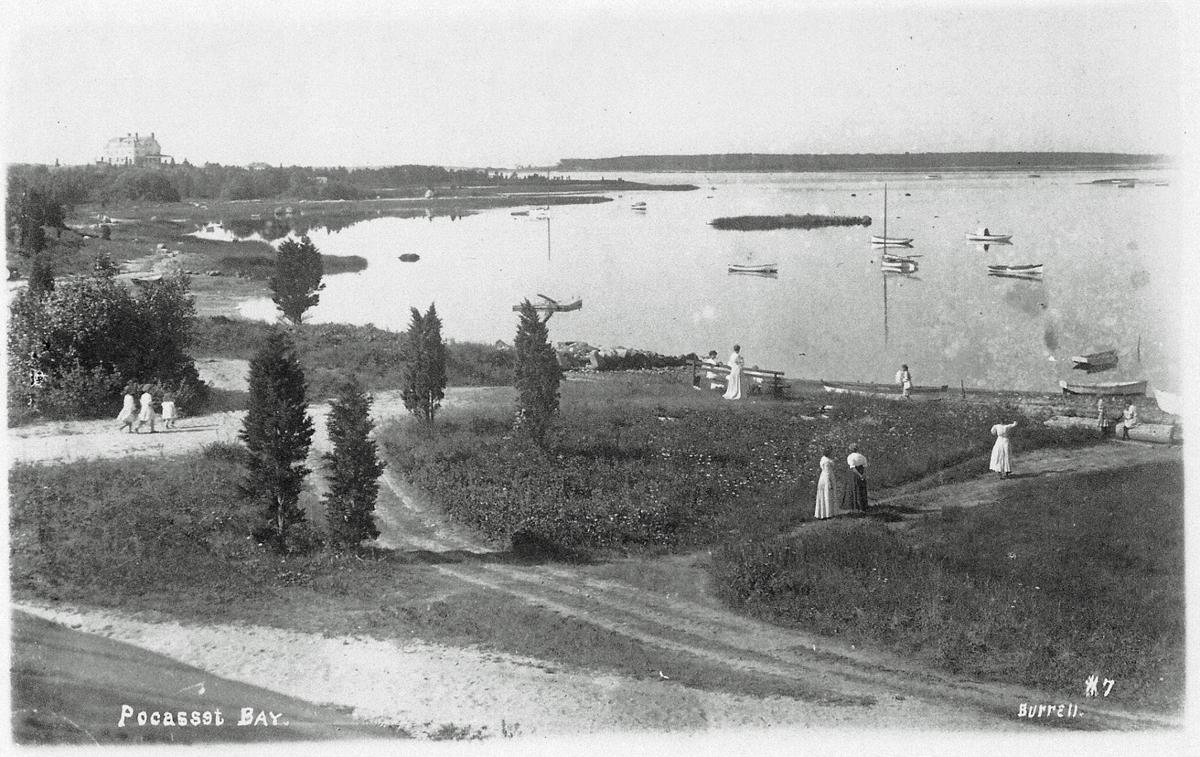by Wesley Ewell, as printed in the Bourne Enterprise 8/16/19
It’s Hen Cove, not Hen’s Cove. At least that’s the legend I learned from my grandmother many years ago. When this postcard photo was made more than a century ago it was apparently called Pocasset Bay. Hen Cove is the middle leaf of the three-leaf clover shape of Pocasset’s harbors; the others being Barlow’s Landing and Red Brook Harbor, which is actually in Cataumet.
Hen Cove is the shallowest of the three harbors. My brother Ken and I learned to sail there. Our family used to joke that, if we ever got into trouble, we could just get out and walk home. Ken once flipped his home-made sailfish and the mast simply stuck in the mud.
Our grandfather had an old, hard-chine, gaff-rigged, cedar catboat named Old Squaw. Grandpa’s old cat was not named for an elderly indigenous woman, but for the sea bird now commonly called a long-tailed duck. The Old Squaw wasn’t technically a catboat, although it was half as wide as it was long, with a big barn door rudder and an even bigger centerboard.Hard-chine cats are notoriously difficult to turn in light air, so Grandpa added an oak bowsprit and a small jib that helped coax it around. That boat was heavy, slow, and a very safe vessel for us in our pre-teen years to use in exploring the area between Scraggy and Wings Necks.
Our favorite trip was to sail out to Bassett’s Island at low tide, run the Old Squaw up onto the sandbar, and go digging for quahogs. In those days you could still find some very big ones. When we had enough, we would take a swim until the incoming tide refloated our boat. Then we would raise the heavy canvas sail, haul the anchor, and coast home on the following sea. Those big clams were pretty tough, but our mom would steam them open, grind them up in a hand-cranked cast iron grinder, and cook them into a glorious chowder. We would save the shells, clean them up and bake them in the sun, then paint watercolor scenes on them and give them away as ashtrays.
There may have, in fact, been some dude named Hen who dubbed this cove, but I really doubt it. The story that my grandmother told me was that it was named after the little rocky islet in the center of this photo. That island is mostly gone now, washed away by many tides and winter storms. It reportedly once had a large rock on the northern edge, followed by a pile of rocks that were covered at high tide. Grandma called it Hen and Chickens Island. The legend is that, when viewed on a foggy morning, the big rock looked a lot like a chicken, and the smaller rocks behind it like a brood of chicks. Hence the name of the island and, by extension, the reason that this scenic inlet is now known as Hen Cove.
